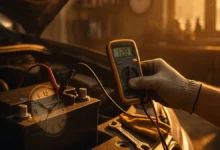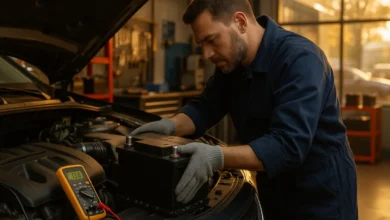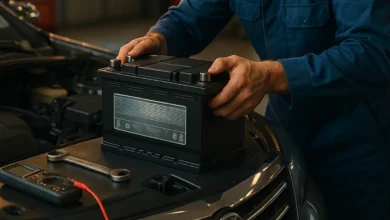Leak Detection Pump: The Expert Guide You Need

Learn everything about the leak detection pump, its role in vehicles, how it works, common issues, and maintenance tips. A detailed expert guide for better performance and reliability.
Introduction to Leak Detection Pump
If you’ve ever wondered why your vehicle sometimes shows a check engine light without any obvious performance problem, chances are the leak detection pump could be the culprit. This small but essential component is designed to monitor and manage evaporative emissions, which directly ties into both your car’s efficiency and environmental impact.
The leak detection pump is not a glamorous part of the vehicle, but it plays a vital role. Without it, your car would release harmful vapors into the atmosphere, and you’d likely fail emissions testing. Even more importantly, the system helps maintain pressure integrity within your fuel system, ensuring the engine operates efficiently without hidden leaks.
What Exactly is a Leak Detection Pump?
A leak detection pump, often referred to simply as an LDP, is a part of the evaporative emissions control system. This system prevents fuel vapors from escaping into the atmosphere. Instead, vapors are collected and rerouted into the engine for combustion, making the vehicle cleaner and more efficient.
The pump itself works as a pressure device. It pressurizes the evaporative emissions system to check for leaks. If a leak is found, it sends a signal to the vehicle’s onboard diagnostic system, triggering a warning such as the check engine light. While many car owners are unaware of it, technicians rely heavily on the LDP to spot problems early before they snowball into expensive repairs.
How Does a Leak Detection Pump Work?
At its core, the leak detection pump is both a testing and monitoring device. It uses a combination of a diaphragm, solenoid valves, and sensors to create pressure inside the EVAP system. Once the pressure is stable, the pump checks for pressure drops that could indicate leaks.
Imagine inflating a balloon and holding it tight. If you feel the air slowly leaking out, you know there’s a hole. The LDP works in a similar way but does it automatically and consistently, without requiring manual inspection. This ensures that the smallest leaks—ones that would otherwise go unnoticed—are detected quickly.
The process typically activates when the car is parked and the engine is off, allowing the system to run checks without interfering with normal driving. This timing ensures accuracy and reduces unnecessary disruptions.
Why the Leak Detection Pump is Important
It’s tempting to think of the leak detection pump as just another part hidden deep in your car, but its importance is huge. First and foremost, it keeps your vehicle in compliance with emissions regulations. Without it, the car would pollute more, and you could face failed inspections or fines depending on local laws.
Beyond regulations, the LDP protects your wallet. Fuel vapors escaping from leaks are literally wasted money. Even small leaks, left unchecked, can slowly drain fuel efficiency. Over time, these inefficiencies add up, making the pump a small investment in better mileage and lower long-term fuel costs.
Common Symptoms of a Bad Leak Detection Pump
Like any part, the leak detection pump can wear out or malfunction. Recognizing the signs early can help you avoid more serious issues.
The most common symptom is the illumination of the check engine light. When the onboard diagnostics detect a problem with the evaporative system, the pump is often the first suspect. Along with that, you may notice the smell of gasoline, especially around the rear of the car near the tank. This could indicate vapors escaping due to a failing pump or a related leak.
Another symptom is reduced fuel efficiency. While it’s easy to attribute this to other factors like driving habits, the LDP plays a role in ensuring fuel vapors are recycled properly. If it’s not functioning, your fuel consumption may increase. In severe cases, you might experience difficulty starting the car, as the system becomes unbalanced and impacts combustion.
Diagnosing Leak Detection Pump Issues
When diagnosing leak detection pump problems, mechanics often start with a code scan. Modern cars store diagnostic trouble codes (DTCs) that can pinpoint issues within the evaporative emissions system. If codes related to small or large leaks appear, the LDP is usually tested next.
Visual inspection can also help. Cracked hoses, loose fittings, or visible fuel vapor can all point to problems. Some mechanics use smoke machines to simulate vapor leaks, making even the smallest holes visible during testing. This method is effective and widely used in professional shops.
If the pump itself is failing, testing its electrical circuits and mechanical diaphragm will confirm the issue. Sometimes the problem isn’t the pump itself but the connections or wiring feeding into it. Proper diagnosis is key before replacing parts unnecessarily.
Replacing a Leak Detection Pump
Replacing a leak detection pump is not the most complex repair, but it does require precision. The pump is typically located near the fuel tank, which can mean removing protective shields or components for access.
When replacing, mechanics disconnect the electrical harness, remove mounting bolts, and detach the hoses leading into the pump. The new pump is then installed in reverse order. For DIY enthusiasts, replacing the LDP is possible, but caution is needed to ensure no hoses are damaged and connections are airtight.
After replacement, clearing diagnostic codes is essential. A road test may also be required to allow the vehicle’s onboard system to recheck for leaks and confirm the repair. While some people may attempt to ignore the issue, driving with a faulty pump risks further damage to the emissions system and can cause you to fail inspection.
Preventive Maintenance for the Leak Detection Pump
Prevention is always better than cure, and the leak detection pump benefits from regular inspection. Checking hoses for cracks, ensuring electrical connectors are clean, and monitoring for the smell of fuel are easy steps you can take.
Routine vehicle service often includes a quick EVAP system check, which helps spot small issues before they grow. Avoiding overfilling your gas tank can also reduce stress on the system, as excess fuel can damage the charcoal canister and lead to more strain on the LDP.
Even though the pump is designed to last for years, external factors like extreme temperatures, poor fuel quality, and infrequent maintenance can shorten its life. By staying proactive, you’ll keep your pump functioning longer and avoid costly repairs.
Table: Signs of a Bad Leak Detection Pump
| Symptom | Possible Cause |
|---|---|
| Check engine light on | Faulty pump or system leak |
| Gasoline smell | Vapor escaping due to leak or weak diaphragm |
| Poor fuel efficiency | Vapors not recycled back into combustion |
| Trouble starting engine | Pressure imbalance in EVAP system |
Expert Quote on Leak Detection Pump
“A leak detection pump may be small, but it’s one of the most critical guardians of your fuel system. Ignoring it can cost you both money and performance.” – An experienced automotive technician
Frequently Asked Questions About Leak Detection Pump
What does a leak detection pump do?
It checks for leaks in the vehicle’s evaporative emissions system by pressurizing it and monitoring for pressure drops. This prevents harmful fuel vapors from escaping.
How do I know if my leak detection pump is bad?
Common signs include the check engine light, gasoline odor, reduced fuel efficiency, or difficulty starting your car. A diagnostic code scan can confirm the issue.
Can I drive with a faulty leak detection pump?
While you can drive, it’s not recommended. The car will release more emissions, may fail inspection, and could waste fuel. It’s best to repair it quickly.
Is replacing a leak detection pump expensive?
Costs vary depending on the vehicle, but typically range from moderate to affordable compared to major engine repairs. Labor is usually the biggest factor.
Can I replace a leak detection pump myself?
Yes, if you’re mechanically inclined and have basic tools. However, professional installation ensures proper sealing and diagnosis.
How long does a leak detection pump last?
In most vehicles, the pump lasts many years. Lifespan depends on driving habits, climate, and overall vehicle maintenance.
Conclusion
The leak detection pump may be a behind-the-scenes component, but its role in vehicle performance and environmental responsibility is undeniable. From reducing emissions to improving fuel economy, it serves as the unsung hero of the EVAP system.
By understanding how it works, recognizing early warning signs, and investing in preventive maintenance, you’ll save money and keep your vehicle running efficiently. So, the next time your check engine light pops up, don’t overlook the possibility that the humble leak detection pump is trying to tell you something important.





